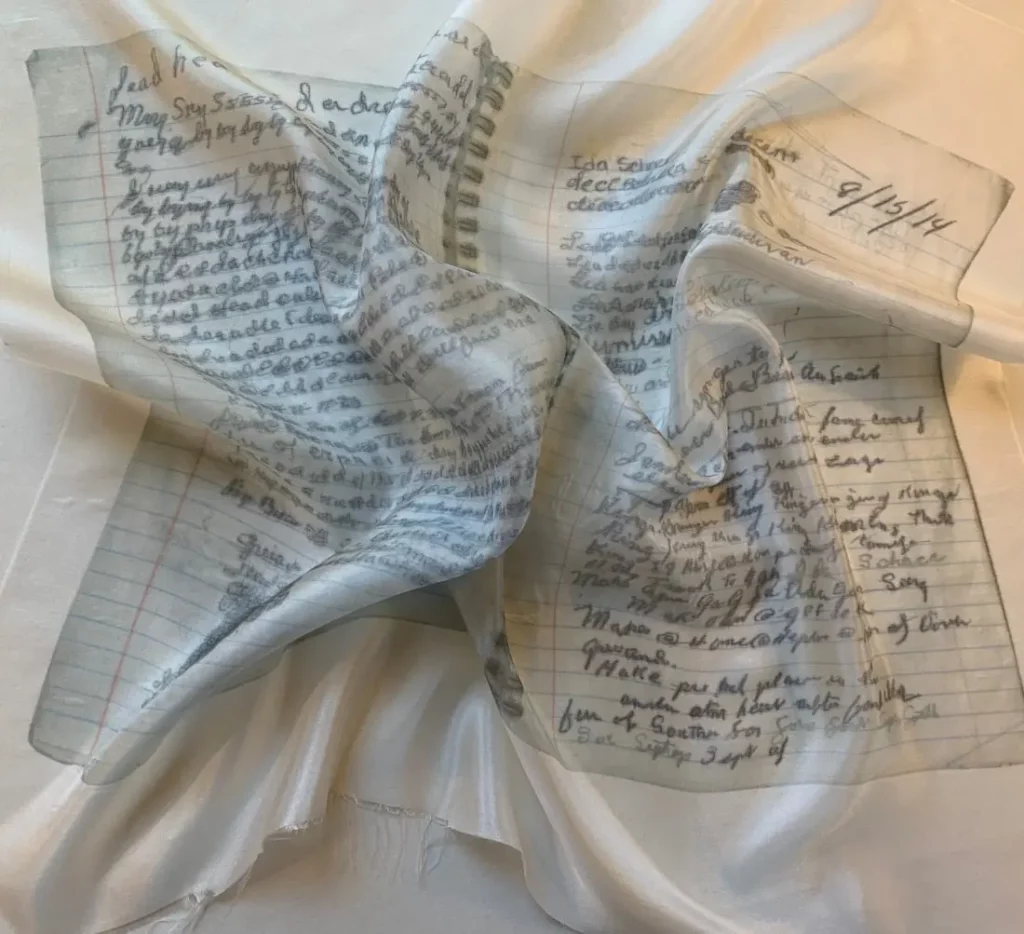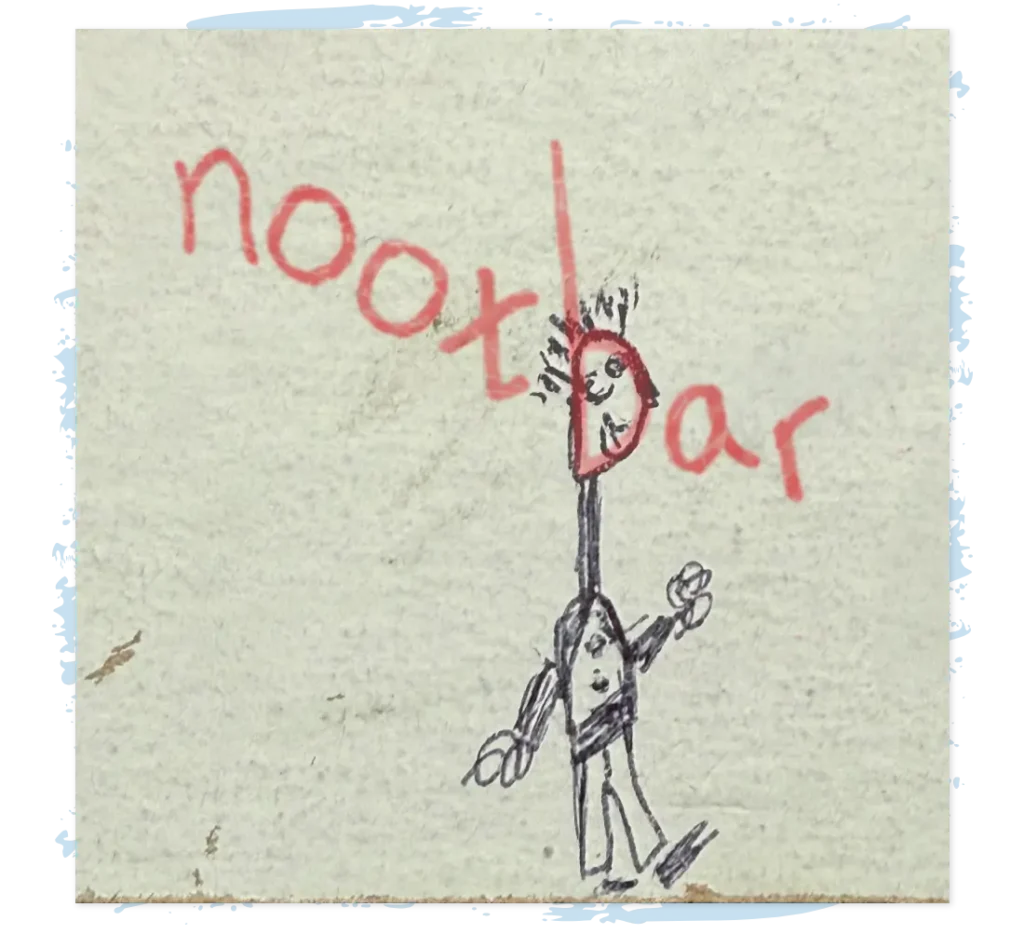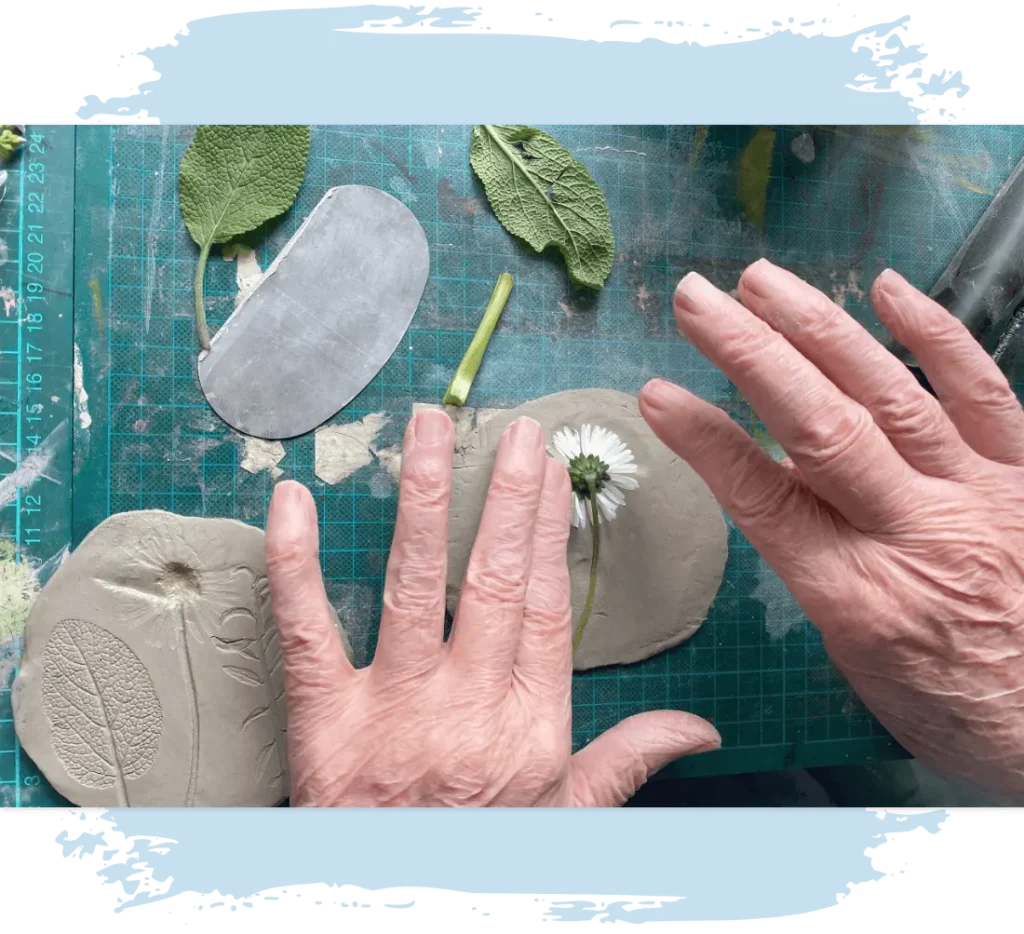Please describe Clouds of Unbecoming, how it came to be and the process you undertook to produce it.
Clouds of Unbecoming: Last Words, Lost Words, Non-Words, from Miriam Schaer Studio, consists of a pair of large, one-of-a-kind artist books I’m making—complemented by a third, previously published book—reflecting on the dementia of Ida Schaer, my mother, and how our relationship changed as the illness consumed her. Clouds of Unbecoming are based on writings Ida left in her final notebook. Though much of its content consists of word salads and repetitive phrasings, the writing expresses the confusion she struggled with during her last difficult years.
I have digitally printed the texts to simulate Ida’s progressively shaky script on 13- by 19-inch pages of Japanese habotai silk, a fabric prized for its ethereal lightness, and enhanced some sections by hand-embroidering the text. One of the volumes employs gray lettering on ivory-colored silk; the other volume features white lettering on black silk. Cotton batting lends the pages a pillowy materiality and handmade clamshell boxes house each volume. Focusing on what Ida was able to write in attempting to understand who she was is a reminder that even during the fog of dementia the struggle for cognition continues at some level.
(w)hole, A Life in Parts—the title of the introductory volume—is a narrative of my final visits with Ida, who died at 90 in assisted living. It serves as an introduction to the two Clouds volumes and is illustrated by my photos and collages of and about Ida. (Copies are available here.)

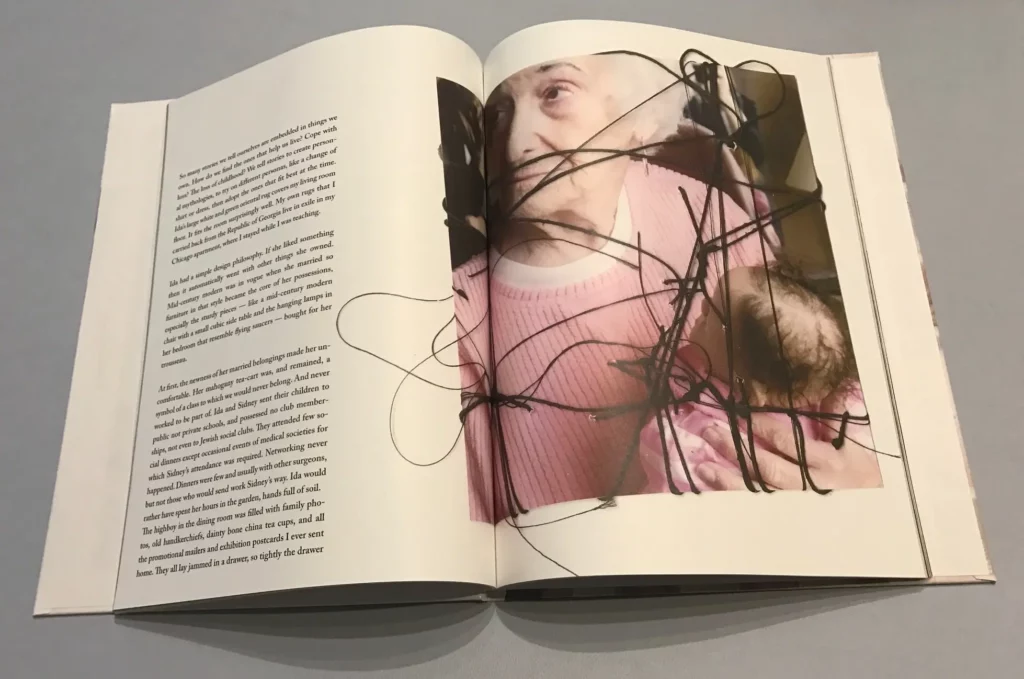
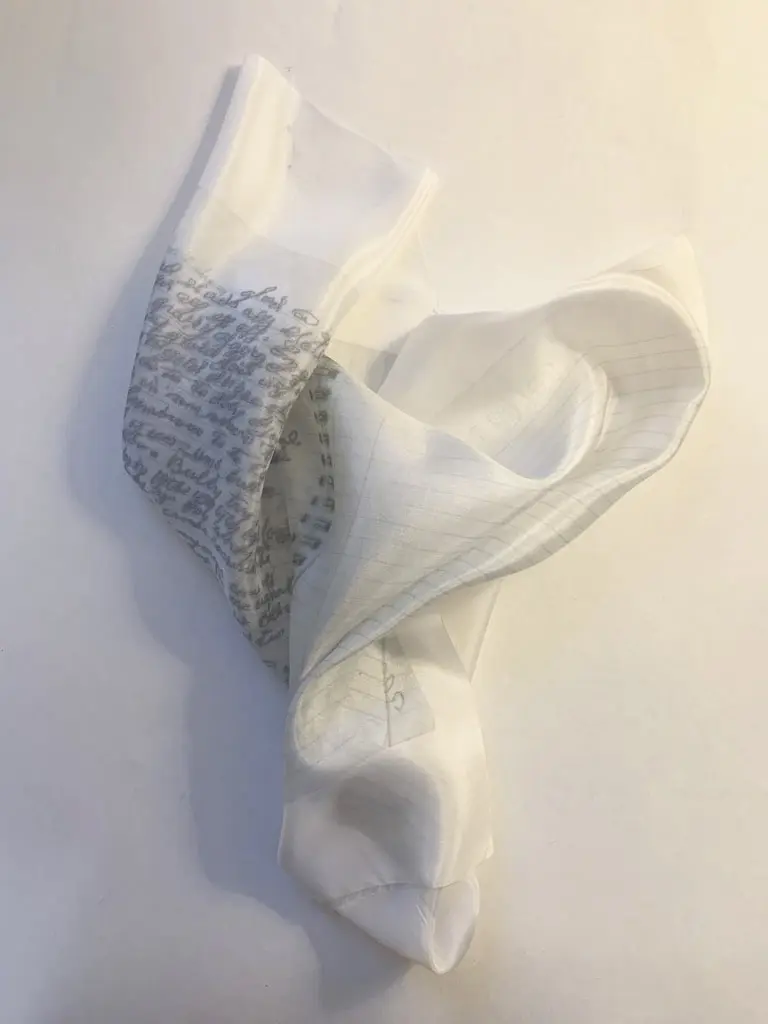
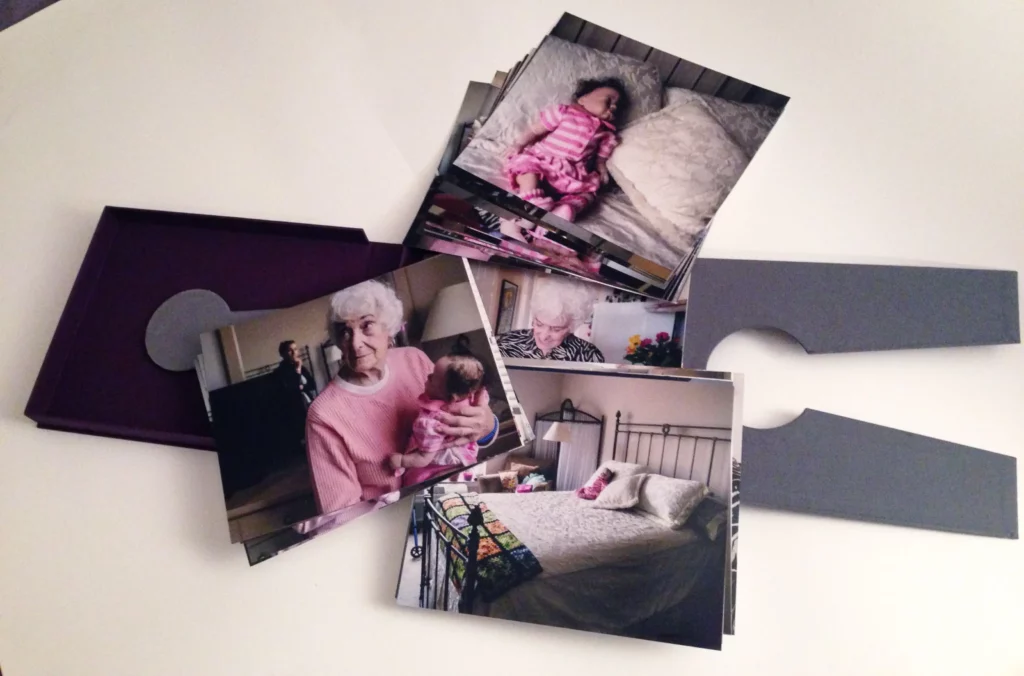
Who initially inspired you to grapple with dementia?
Clouds of Unbecoming concludes, for now, in a series of artistic projects informed by Ida and her dementia. A former maternity nurse, Ida was drawn to photos I had made of an earlier project about childless women through the lens of my own infertility. She responded so strongly to highly realistic dolls I used for some of the shots that I got her one. Ida called the doll Tabitha (the name on its tag) and treated it as a living child. Tabitha seemed to moderate Ida’s condition, making her a little more communicative and emotionally present. Her interactions with Tabitha inspired me to take a series of photos, some of which included myself and my sister. I exhibited the photos; then, I used some of them in (w)hole, A Life in Parts, which became the introductory volume to Clouds of Unbecoming.
How has working on dementia-related art changed you?
I consider myself a multimedia book artist. In addition to unique sculptural books and editions, I create installations, embroidery art, other fiber-related work, prints, and photographs. I’ve used all these media in my ongoing exploration of issues around family relationships. Their application to Ida’s dementia has taken my work in a previously unexpected direction, deepened my understanding of how we age, and organically broadened the palette of my artistic concerns.
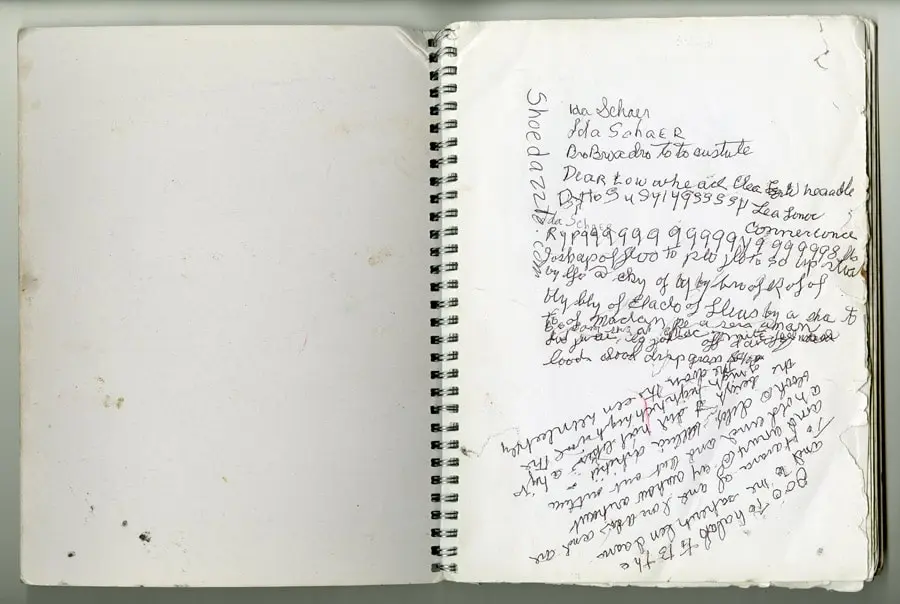
How has Clouds of Unbecoming been received?
My photos of Ida with Tabitha, some of which I used in (w)hole, A Life in Parts, have been exhibited in several venues, including St. Mary’s College of Maryland, the Usdan Gallery at Bennington College in Vermont, London Southbank University, and the Linder Artspace in Berlin. They have also been featured in the art blog Hyperallergic, included in books such as Inappropriate Bodies: Art, Design, and Maternity, edited by Rachel Epp Buller and Charles Reeve (Demeter Press, Toronto), and presented as part of several lectures I have given.
Clouds of Unbecoming has only been shown as a work in progress and has yet to be displayed in its entirety. Reactions have been positive and encouraging among the audiences, primarily artists and academics, who have read or seen this work.
This work is dedicated to: Clouds of Unbecoming is dedicated to Ida Schaer and her memory, and also to Stan Pinkwas, my husband, and Susan Schaer Cohen, my sister, both of whom support me in many ways that help me continue to work as an artist.

